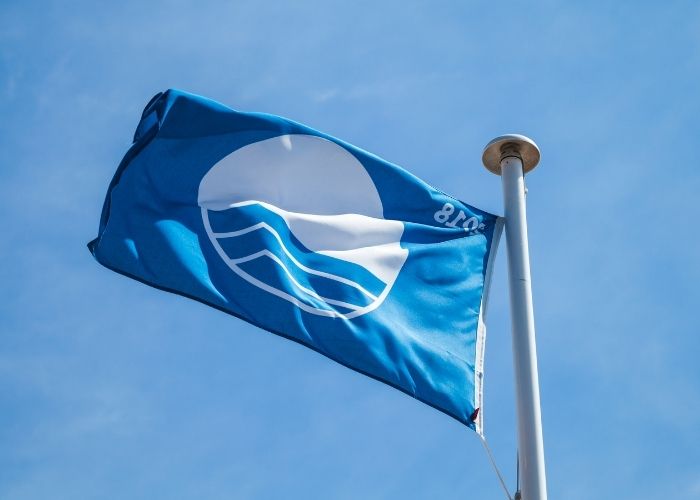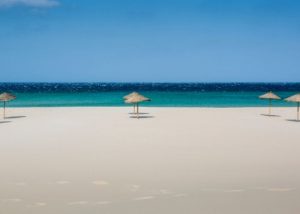Spain will have 713 Blue Flags this year on 615 beaches, 96 marinas and two sustainable tourist boats. That’s 25 beaches and two ports more than last year. Spain continues to lead the world with these numbers, followed by France, Italy, Greece, Turkey and Portugal.
This year, for the first time in their history, 15 Spanish beaches have been awarded a Blue Flag, the international eco-label, and 34 beaches have earned the flag back. Most beaches are on Spain’s nearly 8,000-kilometre coastline, with nine more inland (two more than in 2020).
Encouraging results
The number of Spanish municipalities participating in the Blue Flag Campaign this year has increased to 249. This is 5 more than last year. They themselves have registered 676 beaches, which is 14 more than the previous year. President of the Association of Environmental Education and Consumers (ADEAC-FEE), José Palacios Aguilar, has called these results ‘satisfactory and encouraging’.
Safe, clean and sustainable
The Blue Flag is an international environmental award presented annually to beaches and marinas, among others, that have shown themselves to be clean and safe. Moreover, the Blue Flag campaign is designed to keep governments, businesses and holidaymakers involved in the care of clean and safe water, beautiful countryside and a healthy environment. Furthermore, the most common reason for not awarding the Blue Flag 2021 to beaches is non-compliance with coastal legislation, for example due to overcrowding or the presence of unauthorised facilities.
One in seven blue flags goes to Spain
The International Blue Flag 2021 Jury for the Northern Hemisphere has awarded 4,825 Blue Flags to 47 participating countries. Therefore, this relates to one in seven of these going to Spain. Also, according to Secretary of State for Tourism, Fernando Valdés, ‘Spain is the undisputed leader in Blue Flags in 2021. Once more, proving itself to the world as a safe and sustainable tourist destination’. Importantly, for the tourist, the Blue Flag is the international quality symbol for clean beaches with good water quality and safe, clean marinas.
Spanish top three blue flag regions
Within Spain, the Valencia region leads the ranking with 153 flags (137 beaches, 16 harbours). Andalucia follows with 137 (115 beaches, 20 harbours and 2 boats). In third place is Galicia, with 122 flags (111 beaches, 11 harbours).
It is followed by Catalonia (119 flags), Canary Islands (64), Balearic Islands (44, Murcia (32), Asturias (15), Cantabria (11), Basque Country (5), Melilla (5), Extremadura (3), Ceuta (2) and Madrid (1).
The biggest risers this year are Andalucia (+15) and the Canary Islands (+8). In the rest of the autonomous regions, the number of Blue Flags has remained stable.
Extra award
Above all, municipalities that make an extra effort in various areas were eligible for an extra award. For example, the award for the category ‘Rescue and first aid’ has been given to the following municipalities;
- Chiclana de la Frontera (Cadiz)
- Muro (Balearic Islands).
In the category of ‘Inclusive Beaches’, the following received awards;
- Arnuero (Cantabria)
- Arona (Santa Cruz de Tenerife)
- Santa Eularia del Río (Balearic Islands)
The award for ‘Environmental Education’ went to;
- Arucas (Gran Canaria)
- Conil de la Frontera (Cadiz)
- Gandía (Valencia).
In addition to the Blue Flag, Spain also has 70 Blue Centres and 75 Blue Walks promoting environmental education on the coast, knowledge of the environment and leisure activities.



